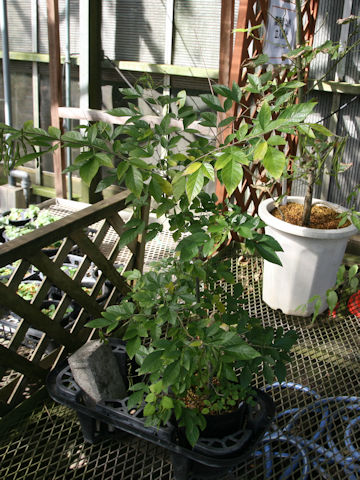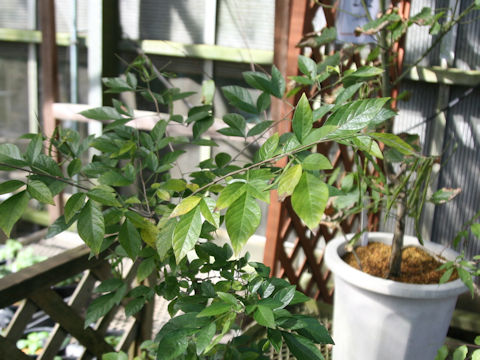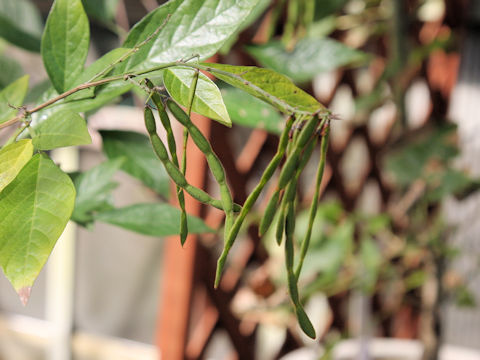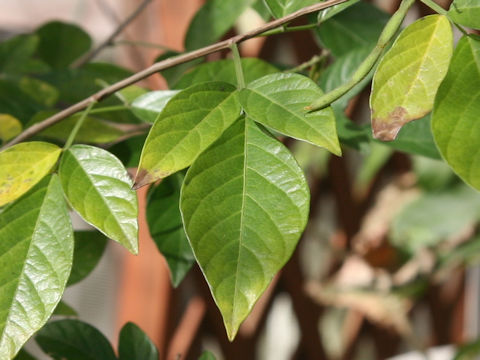
|
The "Miso-naoshi" (Ohwia caudata) belongs to Fabaceae (the Pea family). It is a deciduous shrub that is distributed from the Kanto region of Honshu westward to Shikoku and Kyushu in Japan, as well as Taiwan, the Korean Peninsula, China, Southeast Asia, India, and other regions. It grows at forest margins, grasslands, and along roadsides in mountainous areas, and grows 1-2 m tall. From August to October, yellowish-white or greenish-white papillionaceous flowers bloom in inflorescences from the leaf axils. The fruit is a 4- to 6-segmented loment fruit with bristles on its surface. The Japanese name "miso-naoshi" comes from the fact that the stems and the leaves were believed to "restore the taste of miso" when they were added to miso. In 2013, the University of Tokushima study confirmed that the flavonoids contained in this species are effective in inhibiting the growth of white mold in miso. It is called "小槐花" 'xiao huai hua) in Taiwanese and "小槐花" (xiao huai hua) in Chinese.
|



